Myxicola infundibulum (Montagu, 1808) (or Myxicola sp)Common name(s): Slime tube worm, slime feather duster |
|
| Synonyms:Terebella infundibulum | 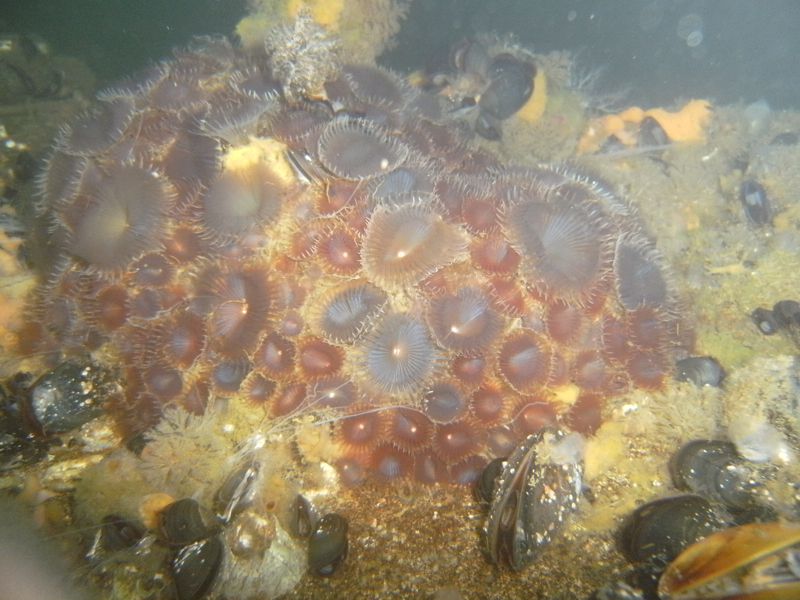 |
|
Phylum Annelida
Order Sabellida
|
|
| A colony of Myxicola infundibulum on the side of a dock. The colony is about 30 cm across and each funnel-like set of radioles is about 2.5-3 cm across. The entire colony is a ball of mucus that remains when the animals withdraw rapidly into their slime tubes. | |
| (Photo by: Dave Cowles, July 2014) | |
Description: Like all members of Family Sabellidae (parchment tube worms), this species has a plume of pinnate, featherlike radioles on its head region and lives in a flexible, leather or parchment-like tube it has secreted. Like serpulids (calcareous tubeworms), the head has a series of pinnate radioles with which the animal suspension feeds. Unlike serpulids, the radioles are not spiraled but form a series of semicircles around the head region. In Myxicola infundibulum none of the radioles have conspicuous ocelli curled around them near their tips (They do, however, have ocelli, as demonstrated by their rapid withdrawal into their tube when a shadow passes over them). Unusually, the proximal part of the radioles are connected to one another by a membrane so that they form a funnel (photo). The thorax is longer than in most local sabellids--8 setigers (setae-beaering segments). The first 5 or 6 thoracic neuropodia have long-handled uncini (not avicular uncini) and no pickaxe-shaped setae. The abdominal uncini occur in rows that extend much of the way around the segments and they have several apical teeth. They secrete gelatinous tubes of mucus. The color of the plume of radioles is yellow to greenish, brown, or brownish-purple. Worm is up to 9 cm long.
How to Distinguish from
Similar Species:
The membrane which connects the base of the radioles,
forming them into a funnel, is a distinctive feature of this species
when
combined with abdominal uncini
which form bands nearly around the body. A second, related
slime-tube
worm, M.
asthetica, has also
been reported to be in the region. It has only 1-4 thoracic setigers
and a single
apical
tooth
on the abdominal
uncini,
and it often attaches to ropes.
Note:
Leslie Harris, a polychaete specialist from the Natural History Museum
of Los Angeles County, has informed me that this although the species
along our coast were synonymized with the European species Myxicola infundibulum,
our species differs from that species and is probably another Myxicola species.
Furthermore, the European M.
infundibulum lives embedded in soft sediment while it is
the European species M.
aesthetica that produces massive slime tubes for itself as
does this species. So it would probably be safer to call this species "Myxicola sp".
Geographical Range: Pacific coast of North America from the Bering Sea to California and in the Atlantic Ocean and Mediterranean Sea.
Depth Range: Intertidal to 425 m.
Habitat: In rock crevices or on floats. Sometimes buried in soft mud.
Biology/Natural History: These worms are often found as an aggregation in which the individual members secrete so much slime that they make a boulder-shaped colony. They withdraw rapidly into the clear mucus tubes when disturbed or when a shadow passes over. Silt and small debris may cover the mucus, masking its transparency (photo). At other times, they build their mucus tubes wedged between other species of worms, mussels, or tunicates.
This species can withdraw into its mucus tube very rapidly, by use of a giant ventral axon. That axon extends throughout the length of the body and has been the subject of much research on neural activity. It comprises 27% of the animal's entire nervous system. Nerve impulses travel at 6-20 m/s along the axon. The quick withdrawal into the tube not only shelters the worm from predators but forcefully ejects wastes from the tube.
Unlike in some other sabellids, the crown of radioles is not autotomized to escape predators, and if the animal loses its radioles it will likely die. Previous authors have claimed that this species cannot regenerate, but this has been disproven more recently, at least in specimens from the Mediterranean Sea (Licciano et al., 2015)
The name 'Myxicola' means 'living in slime' and 'infundibulum'
refers
to the funnel shape formed by the radioles.
| Return to: | |||
| Main Page | Alphabetic Index | Systematic Index | Glossary |
References:
Dichotomous Keys:Carlton, 2007
Kozloff, 1987, 1996
General References:
Gotshall,
1994
Harbo,
2011
Kozloff,
1993
Lamb
and Hanby, 2005
Morris
et al., 1980
Scientific Articles:
Licciano,
Margherita, Watson, Gordon James, Murray, Joanna Michelle, and
Giangrande,
Adriana, 2015. Evidence of regenerative ability in Myxicola
infundibulum (Annelida, Sabellida): evolutionary and
systematic implications.
Invertebrate Biology 134:1 pp 48-60
Web sites:
General Notes and Observations: Locations, abundances, unusual behaviors:
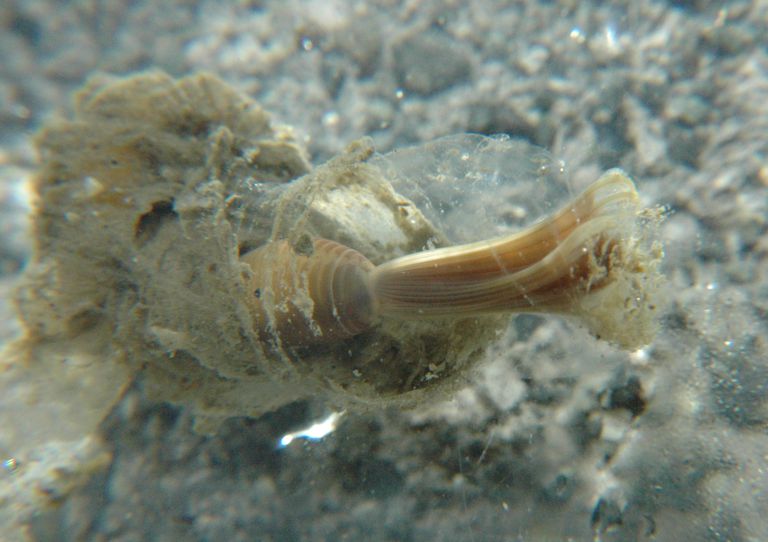
A view of the animal partly retracted into its slime tube
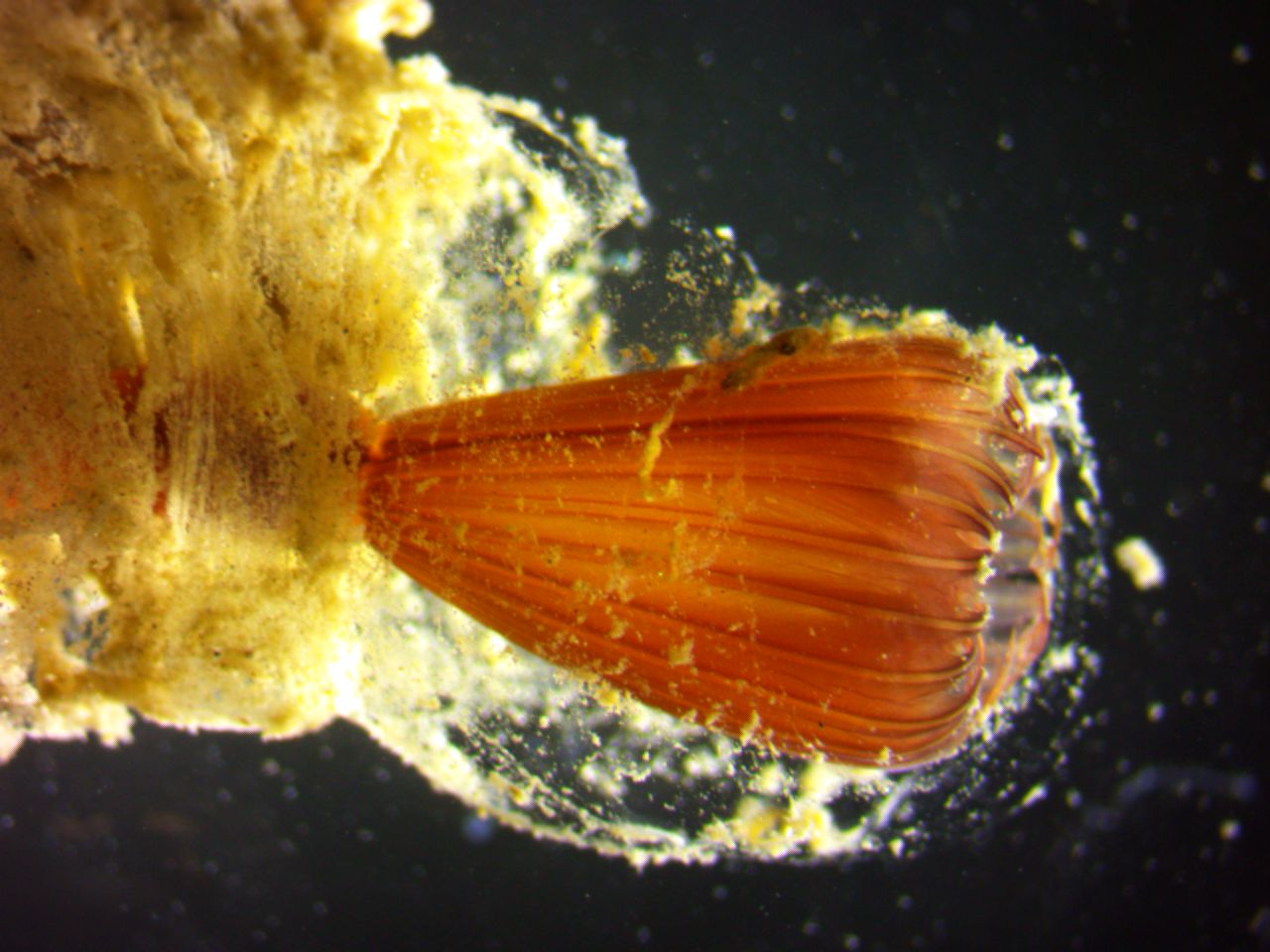
Another close-up view of the radioles from a live individual in a colony from Cap Sante Marina. Photo by Dave Cowles, July 2018
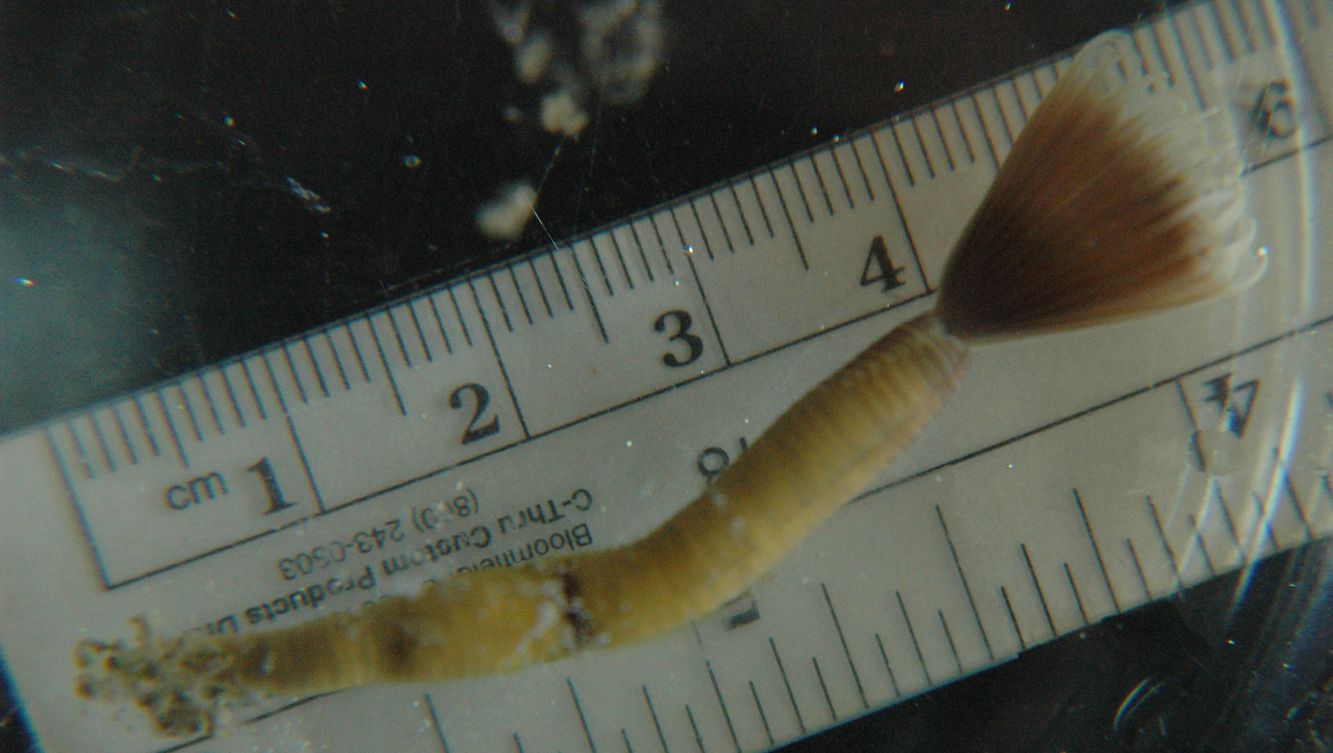
When removed from the tube, this individual is about 6 cm total
length.
Note that the animal has immediately begun to produce a new mass of
mucus
around itself.
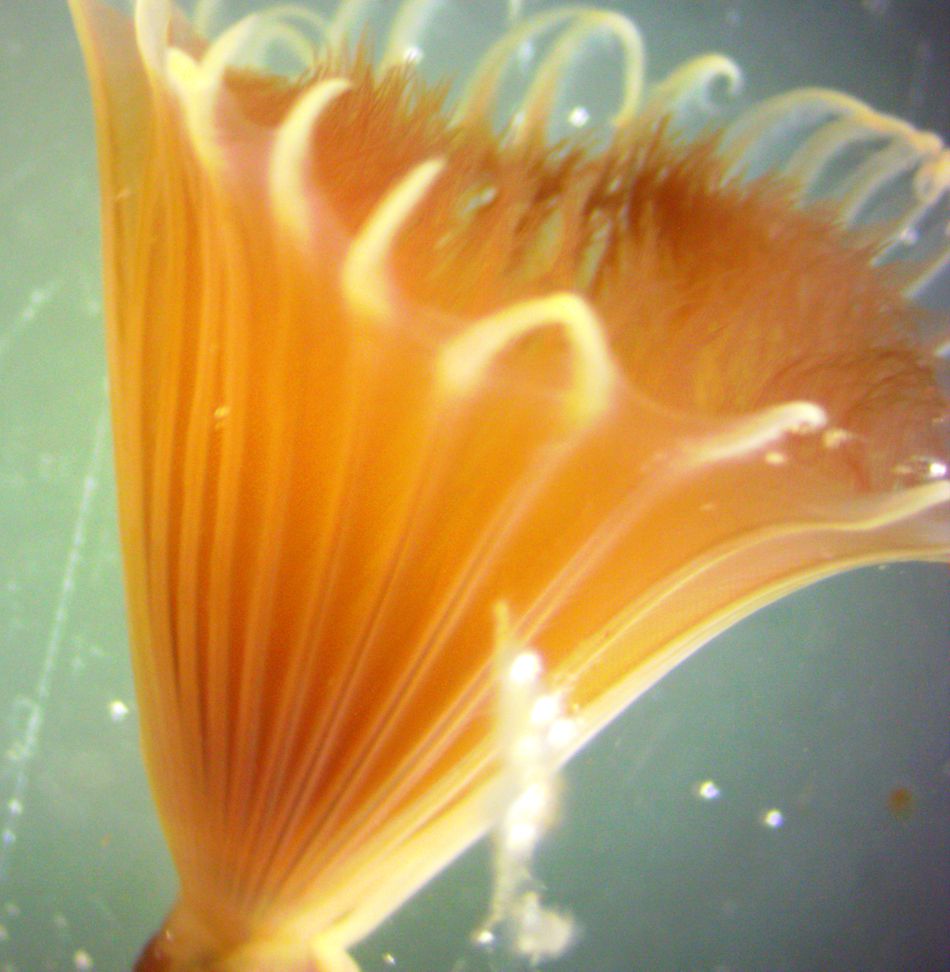
The radioles
of
this species are united through much of their length into a distinctive
funnel.
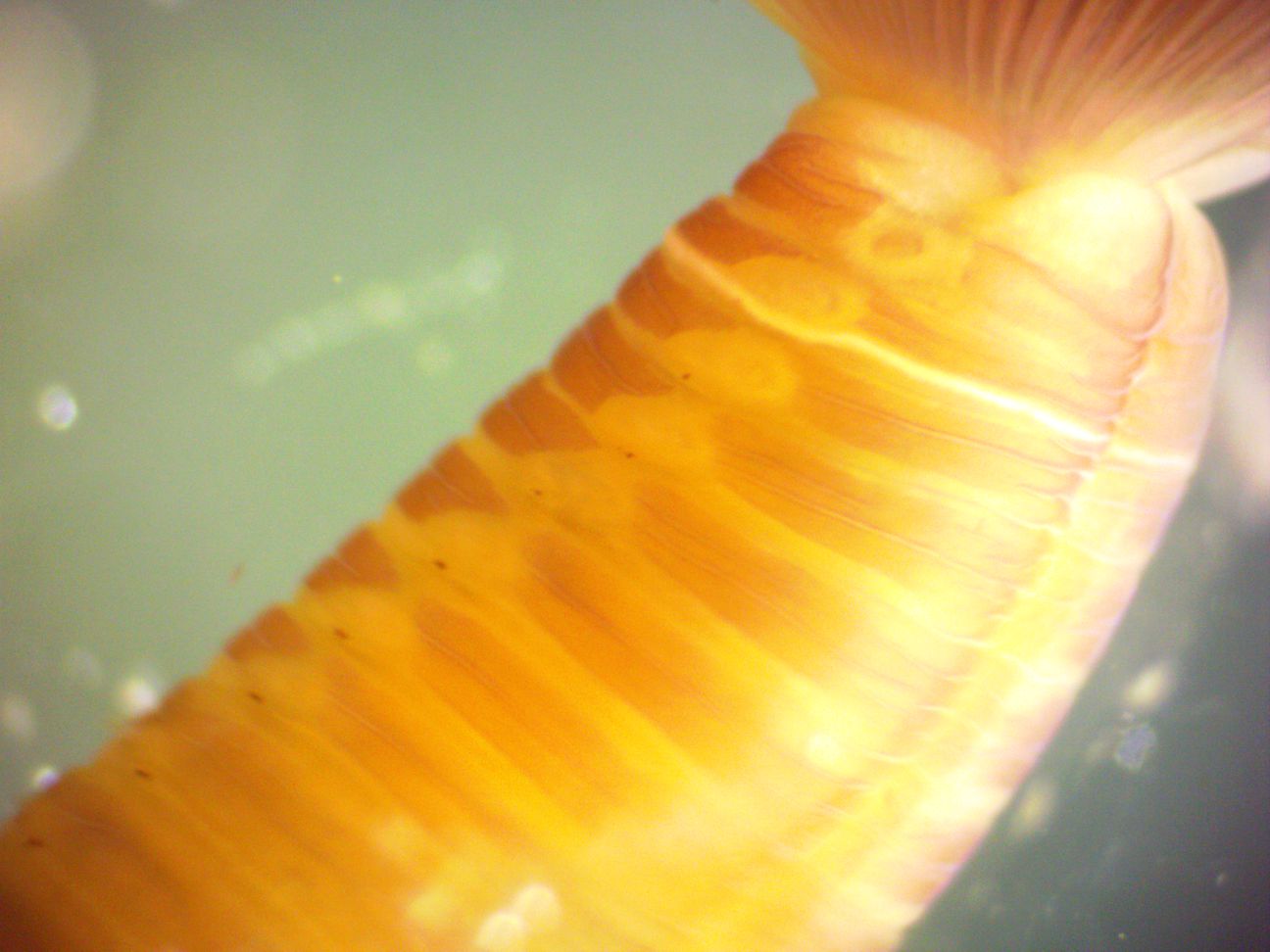
The thorax
has 8
segments, the first 5 or 6 of which (at least) have long-handled uncini
and no pickaxe-shaped setae.
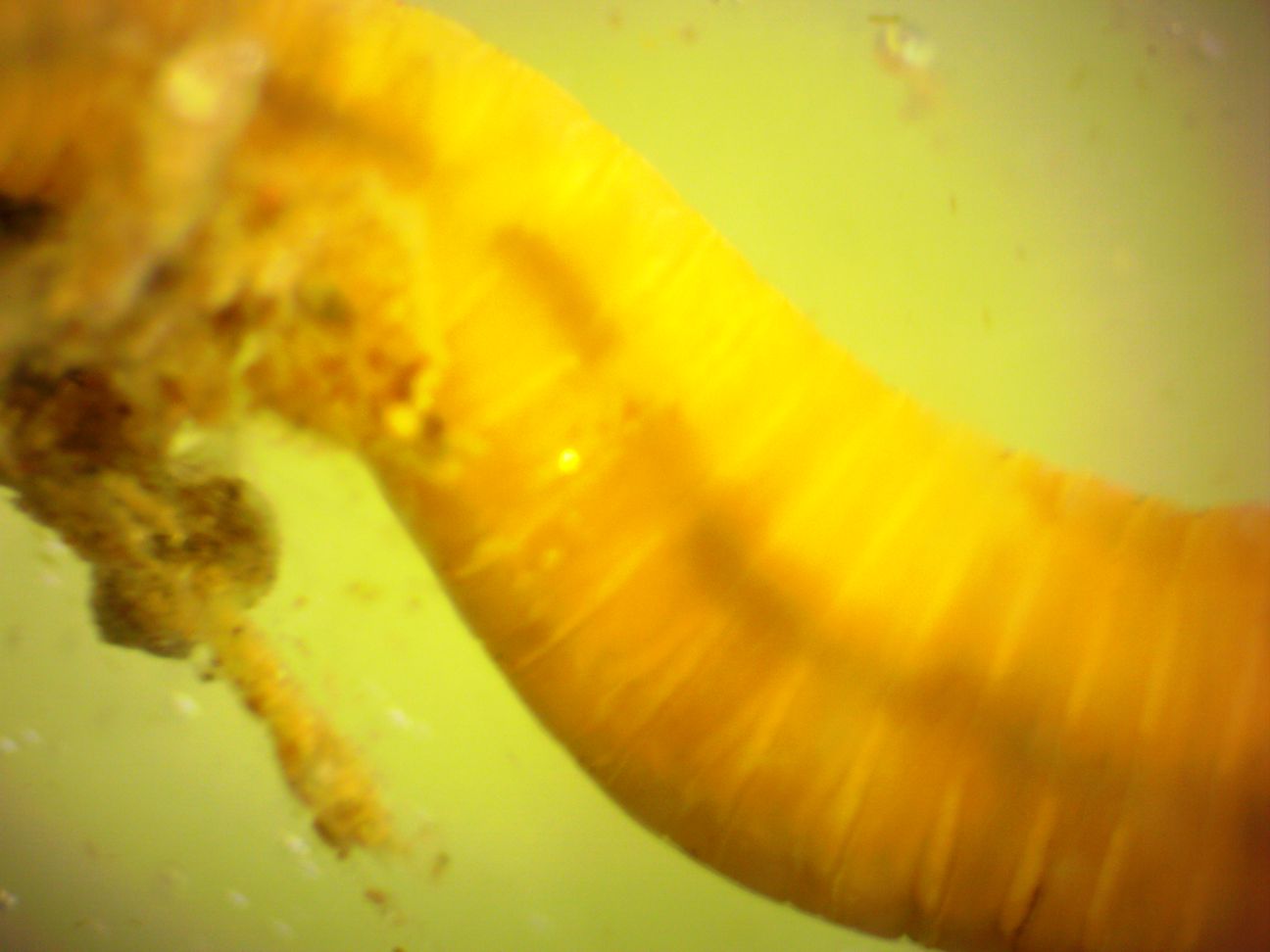
The abdominal
uncini
form rows that go nearly all the way around the animal.
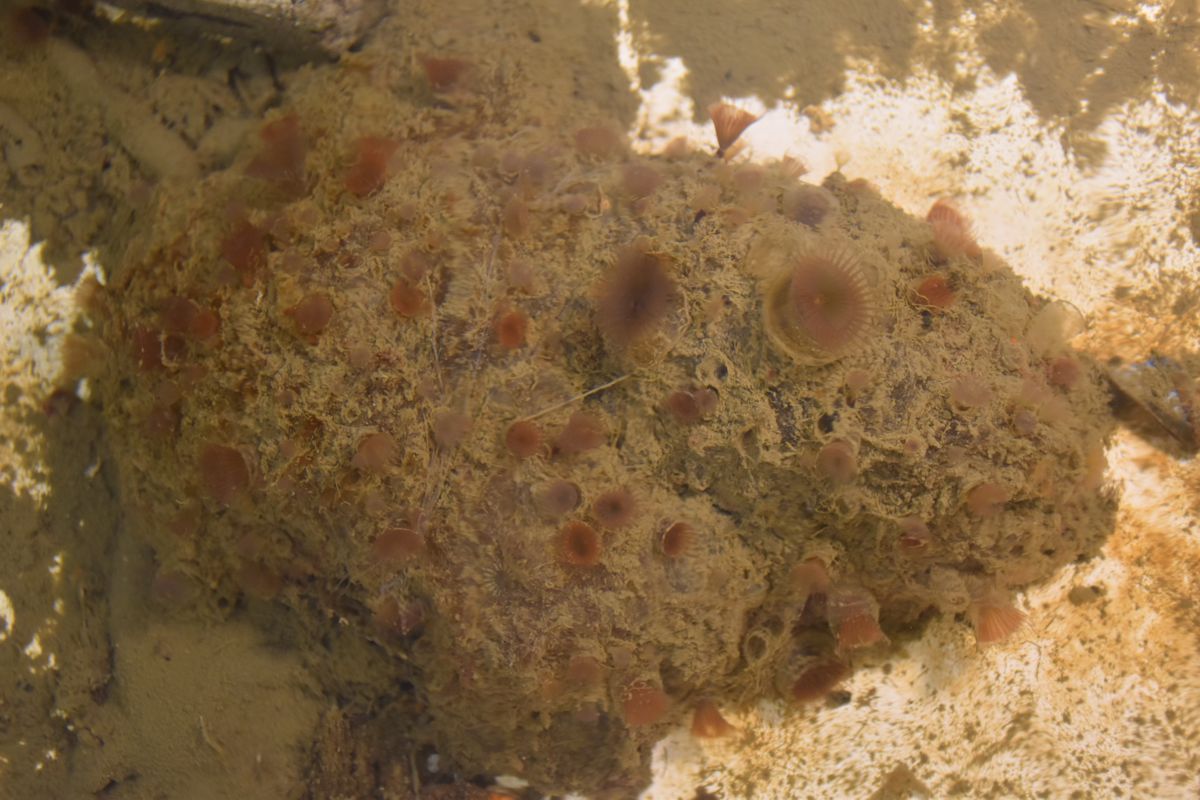
A cluster of individuals from Cap Sante Marina, July 2018. Photo by Dave Cowles
Authors and Editors of
Page:
Dave Cowles (2014): Created original page
CSS coding for page developed by Jonathan Cowles (2007)
Salish Sea Invertebrates web site provided courtesy of Walla
Walla University